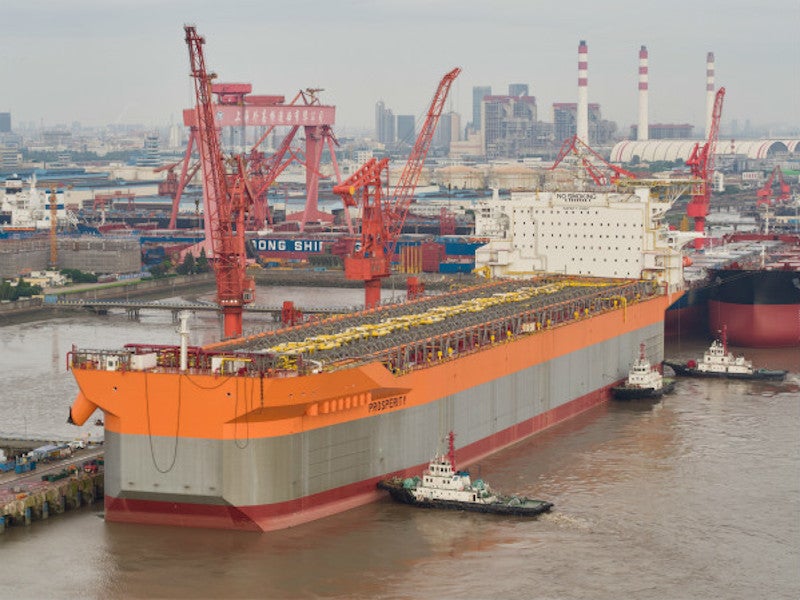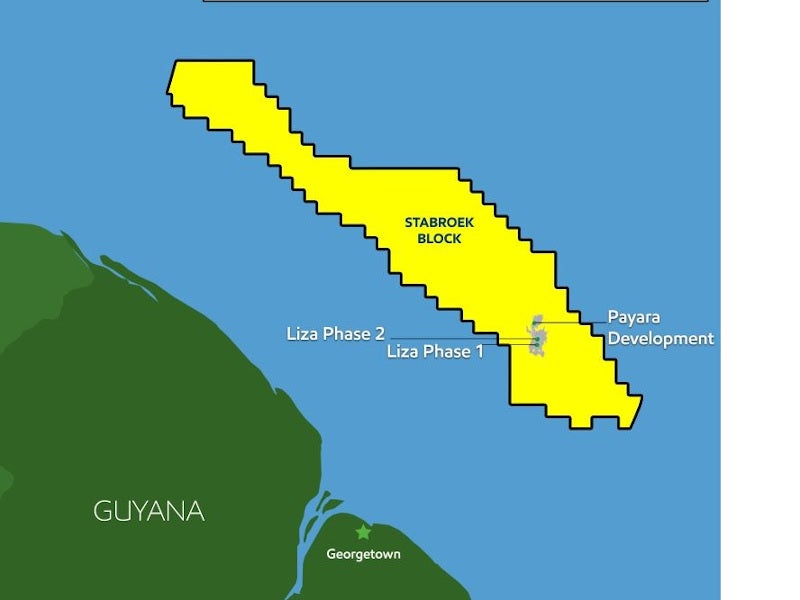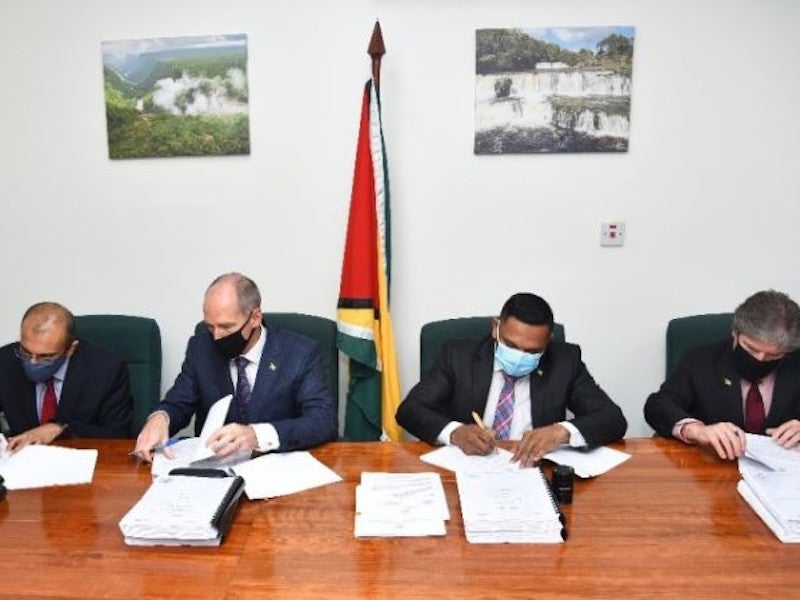Payara will be the third oil field to be developed in the Stabroek Block offshore Guyana. Esso Exploration and Production Guyana (EEPGL), a subsidiary of Exxon Mobil, is the operator of the Payara development project.
EEPGL holds a 45% stake in the Stabroek Block, while Hess Guyana Exploration, a subsidiary of Hess Corporation, holds a 30% stake, with the remaining 25% stake held by CNOOC Petroleum Guyana, a subsidiary of China National Offshore Oil Corporation (CNOOC).
The project partners reached a final investment decision (FID) on the project in September 2020 after the field development plan was approved by the government of Guyana.
The total investment in the project is estimated to be approximately £7bn ($9bn). Scheduled to commence production in 2024, the Payara offshore field is expected to produce up to 220,000 barrels of oil a day (bpd).
Location and discovery
The Payara field development is located in the Stabroek Block approximately 200km off the coast of Guyana. The water depth in the area is approximately 2,000m.
The resource base for the offshore field development is estimated to be 600 million barrels of oil equivalent (Mboe).
The oilfield was discovered by the Payara-1 well in January 2017 that encountered net oil pay of more than 29m in sandstone reservoirs. It was the second oil discovery in the Stabroek block.
The development of the Stabroek Block
The Stabroek Block is spread over 26,800km2 and the gross recoverable resources from 18 discoveries on the block are estimated to be over 8 billion barrels of oil equivalent as of January 2020.
The major discoveries in the Stabroek Block include Liza, Payara, Liza deep, Snoek, Turbot, Ranger, Pacora, Longtail, Hammerhead, Pluma, Tilapia, Haimara, Yellowtail, Tripletail and Mako.
The three most advanced development projects in the block that include Liza-1, Liza-2, and Payara are expected to produce approximately 560,000 barrels of oil a day (bpd) in 2024.
The Liza Phase 1 development came on stream in December 2019 and it will achieve full production capacity of up to 120,000bpd of oil in a few months. The Liza Phase 2 development is expected to produce first oil in 2022 and its production capacity is expected to be 220,000bpd of oil.
Payara field development plan
The project involves the drilling of a total of 41 wells, including 20 production and 21 injection wells, from up to ten drill centres.
The Payara subsea development will be tied-back to the Prosperity floating production, storage, and offloading (FPSO) vessel.
The Payara development will be similar to the earlier two developments, Liza phases 1 and 2, on the Stabroek Block.
Prosperity FPSO
The design of the Prosperity FPSO is based on SBM Offshore’s Fast4Ward programme.
Moored in 1,900m-deep waters, the FPSO will have a processing capacity of 220,000bpd of oil, along with an associated gas treatment capacity 400mcf a day, and a water injection capacity of 250,000bpd.
The crude oil storage capacity of the FPSO will be approximately 2 million barrels.
Contracts awarded
SBM Offshore was contracted for the construction and installation of the Prosperity FPSO in October 2020. It will lease and operate the FPSO initially for two years before transferring the ownership and operatorship to EEPGL.
Earlier, SBM Offshore was contracted to perform front end engineering and design (FEED) studies for an FPSO and to construct the FPSO’s hull in November 2019.
Shanghai Waigaoqiao Shipbuilding, a subsidiary of China State Shipbuilding Corporation, was subcontracted by SBM Offshore to build the hull of FPSO Prosperity. The hull was built based on SBM Offshore’s Fast4Ward programme. The FPSO hull construction was started in January 2019 and completed in August 2019.
Saipem bagged a subsea contract for the project in November 2019. The contract scope includes the installation of manifolds, flexible and rigid risers, dynamic and static umbilicals, flying leads, and approximately 130km of flowlines. Saipem’s vessels FDS2 and Constellation will be deployed for the field development.
Shawcor was subcontracted by Saipem to provide thermal insulation and anti-corrosion coating services for the Payara development project in October 2020.





